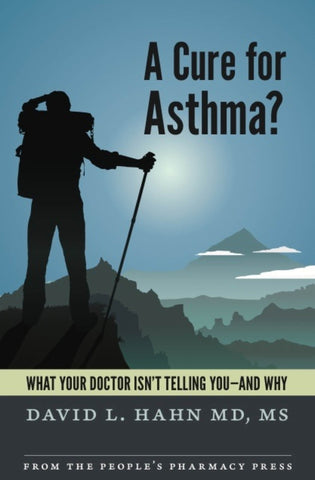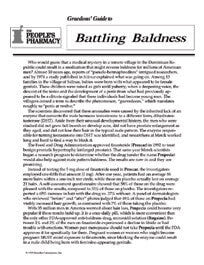Link to your individual collections by creating a new linklist in the Navigation section of the admin.
You can then have it appear here by choosing your new linklist under Customize Theme / Sidebar.

Show 1201: Hard-to-Diagnose Conditions Can Be Deadly
Diagnosis is a crucial first step for medical treatment. In some situations, recognizing the condition as soon as possible makes a big difference in the outcome. However, doctors may have difficulty with certain diagnoses. If patients can help recognize when they are in trouble and ask questions, certain hard-to-diagnose conditions may be identified more quickly.
The Challenge of Hard-to-Diagnose Sepsis:
Each year, more than a quarter million Americans die of sepsis. This potentially deadly condition occurs when the body reacts to infection so strongly that it throws everything out of balance. Doctors know a lot about sepsis, but they don’t always recognize the early stages. When should you suspect sepsis and ask the physician to rule it out?
We hear from a patient about a strep infection and urinary tract infection that put her in grave danger. What did she learn? Patients are urged to pay attention to TIME: temperature, infection, mental confusion and extremely ill. If those signs are present, it makes sense to ask if the problem could be sepsis.
Dr. Jay Lamba, sepsis champion, also describes the mnemonic device Q-SOFA. It stands for Quick Sequential Organ Failure Assessment for health professionals. However, we should all be aware that changes in mental status, systolic blood pressure below 100 and respiration above 22 breaths per minute could be red flags for hard-to-diagnose sepsis.
The research on vitamin C, thiamine and steroids for sepsis was published in JAMA.
When Stroke Is Hard to Diagnose:
Stroke kills approximately 140,000 Americans annually, with close to 800,000 people experiencing a stroke. You have probably heard that fast treatment is crucial to protecting the brain from lasting damage. The usual early signs are numbness or weakness, especially on one side of the body or face. Confusion or trouble speaking could signal a stroke. So can sudden difficulty with vision. Dizziness, lack of balance, poor coordination that comes on suddenly and causes trouble walking are other possible signs. In addition, a sudden severe headache might be caused by a blood clot in the brain (and ischemic stroke) or bleeding into the brain (a hemorrhagic stroke).
If a patient shows up at the emergency department with classic symptoms of a stroke, doctors can diagnose it easily. But not every stroke presents with classic symptoms. Find out what signs you might look for in a loved one or yourself to ask the physician to check for a stroke.
Keep in mind that time is brain; get the patient to the ED as quickly as possible, preferably by calling 911.
This Week's Guests:
Lynne Hamlet is from Hillsborough, NC.
Jaydeep J.S. Lamba, MD, PhD, is Assistant Professor of Medicine in the Division of Hospital Medicine at the UNC School of Medicine. Dr. Lamba is a hospitalist and one of UNC’s sepsis champions who deals with patients and systems issues in the hospital.
Larry B. Goldstein, MD, FAAN, FANA, FAHA, is the Ruth L. Works Professor and Chairman of the Department of Neurology at the University of Kentucky. He is Co-Director of the Kentucky Neuroscience Institute and Interim Director of the UK-Norton Stroke Care Network.




